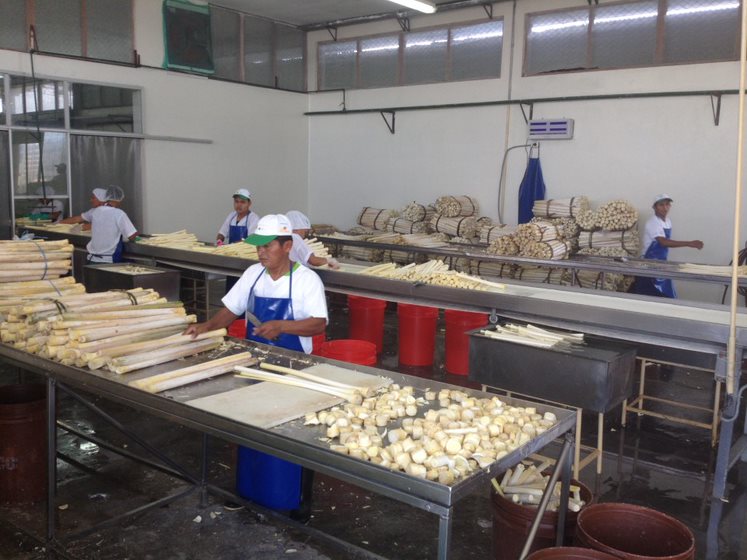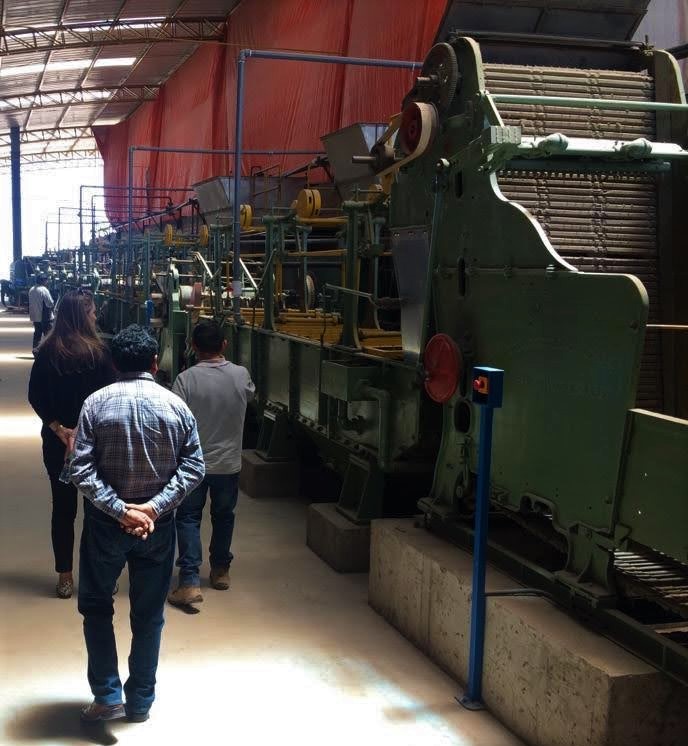Editor’s Note: Ever since Agenda 2030 and the Sustainable Development Goals were agreed to by the UN General Assembly in 2015, there has been an oft-repeated “transformative promise” underpinning all the other goals: Leave no one behind (LNOB). And it has served as a guide on the roadmap to development, calling on everyone engaged in supporting the development process to focus on the LNOB principle, from donor countries to international organizations and NGOs. Yet there are serious difficulties in applying this principle and there may be cases where it’s not appropriate or even applicable as argued in the following article by Kees Blokland, a noted social entrepreneur and founder of Agriterra, an agri-agency that aims to provide expert advice to farmers and cooperatives. Blokland surveys the development issues in the rural sector and concludes that another approach – dare to select “audacious entrepreneurs” to jumpstart development – is likely to be far more effective to address poverty.
In the preparations for the upcoming Food Systems Summit, one of the Action tracks deals with Equitable Livelihoods and Value Distribution. How to tackle poverty in rural areas?
The action track document under the header ‘Anchoring food systems transformation in small- and medium-scale production, family farmers, indigenous peoples, women and workers in food value chains’ resonates with priorities in my work over the last decades. Calling for “Strengthening their [i.e. farmers’] organizations’ abilities to aggregate value, hold duty bearers to account and promote access to finance, services and markets” is basically the summary of activities of the development cooperation agency Agriterra that I founded 24 years ago.
Yet, to sharpen the arguments and actions, I will try and address some of the issues that regularly recur in official documents on policies and actions to alleviate rural poverty. I shall focus here on policies that foster economic development, and that link farming and other rural economic activity to markets and banks. In such development policy recommendations, one generally finds a mixture of three very interrelated topics that have to do with:
- Who is called to act? Who is the agent of transformation? Who are those ‘we’, like in “we must tackle poverty”?
- The all-encompassing theme of the United Nations “leave no one behind” (LNOB): What does this mean for the farmers? Do they stay in farming? Why does youth leaving agriculture is seen as a negative phenomenon? Do governmental or development cooperation agencies have sufficient capacity to “leave no one behind”?
- And, finally, it is about the reality on the ground, the actual numbers: About how many poor people are we talking about? What is their role in the economy?
Let us start with the last question.
The Real Contribution of Poor Farmers to World Food
Starting with the numbers: In 2013, the FAO commissioned Sarah Lowder to determine the number and size of farms to support policymaking in the 2014 International Year of Family Farming. That was seen as important since a large number of conflicting numbers were circulating at the time regarding the actual contribution of poor farmers to world food, including claims that they were responsible for most of the food produced.
Her figures allow her to conclude on the contribution of poor farmers to world food production. And they rectify unbelievable statements about the contribution by poor farmers in the order of 70-80%. She found there were 570 million farms with 1.4 billion farmers in total. Farms smaller than 2 hectares – 84% of the total number of farmers but they hold only 12% of the land – are mainly poor farmers.
Lowder’s conclusion is clear: “It is implausible that with only 12% of the world’s land, small farms, defined as those operating less than 2 ha, are able to produce a large share of the world’s food, and claims that they do, remain unsubstantiated.”
Family farmers worldwide manage 90% of all farms and together 75% of the land. It shows that “family farms” is a far broader category than just poor farmers. As such ‘family farm’ is a less distinctive category and consists of a vast group of rural poor families, on the one hand, and some very productive ones, on the other.
As far as family farms are concerned, most of the food and agricultural production takes place on the ‘6% family farms’ with 63% of the land in Lowder’s table. These top family farmers, in North America, Europe, Australia, and New Zealand, along with the companies (10% of the farms, with 25% of the land), are ticked “industrial farming” and on this 88% of the land, most food is produced.
The farm size distribution and corresponding production are like Pen’s Parade of many dwarfs and a few giants.
The Land Coalition underscores that the lowest 50% of the farmers control only 3% of the land. Most of them are generally unemployed, with no other option than to try and make a living on a plot, without the proper tools or inputs. In short, the poor hardly produce and are therefore poor.
A small number of farmers feed the world and produce a major part of the agricultural crops. According to the Land Coalition, the largest 1% within this category controls more than 70% of the world’s agricultural land. This shows that even in the family farms bigger than 2 hectares and companies the farm size distribution is very skewed.
The situation is this: These 60 million family farmers plus large corporations are the ones that really feed the world.
In African countries, the situation is not yet as skewed as elsewhere. The hundred million poor farmers live and work in the bush, often out of sight of governments or cooperation entities. Lowder concludes: “For some regions and country groups, these small farms control a larger share of the land”, like 39% in Africa, “… and are thus likely responsible for a larger share, but not necessarily a majority, of food or agricultural production.” In Africa, however, there are few farms bigger than 50 hectares. In those countries, therefore, an important category of medium-size farms drives “visible” (i.e. measurable) agriculture activity in rural areas.
After Lowder, Ricciardi et al came up with another oft-quoted estimate: “ ..farms under 2ha globally produce … 30–34% of food supply on 24% of gross agricultural area”. His database is however biased because it does not include a considerable part of industrial agriculture. The actual contribution of poor farmers to the world food supply will therefore be closer to Lowder’s 12%.
This means that poor farmers do not play a key role in world food production, despite claims to the contrary. Put another way: They are not so much needed to feed the world. This is an important fact because their supposedly large contribution to the world food supply was one of the arguments that international organizations used to call for donor support to this group of poor farmers.
Then again, it is hard to understand how more than 1 billion poor farmers can stay on farms and yet pull themselves out of poverty.
The donor community has regularly pledged to give poor farmers the necessary tools, land, market access, and funding to get out of poverty and ensure food supplies meet growing demand. However, if one looks at how agricultural extension services function in low and middle-income countries, one finds repeatedly ‘evidence of exclusion, as farmers with higher income and/or larger farm size have significantly better access than poorer/smaller farmers.’
There is also a ‘gender gap’. Very scarce available information about the outreach of extension services makes me conclude that in developing countries extension services are likely reaching only 1% of farmers through the actions funded by the donor community, plus an additional 3% through national governments.

Another 12% of farmers are advised by commercial companies. In this latter case, the advice reaches more the middle and higher segment of farmers, which means that public action reaches a maximum of 4% of smallholder farmers. There are countries that report higher percentages up to 21%, like Bangladesh, India, Malawi, and Nepal.
Thus, even if it is the intention to “leave no one behind”, in practice it happens: Most small farmers are left behind.
How the Development Process Transforms Rural Economies: The “Quiet Revolution”
Non-selective governmental support or international cooperation focussing on the poorest for the sole reason that they are so poor leads to inefficiencies in the use of public resources and will not boost economic development. Scarce resources are spent on randomly chosen rural residents who happen to be poor.
The extension services in many cases will not trigger sustainable development, because many of the supported farmers are not entrepreneurs. Many of them might not even have the ambition to remain in agriculture. They are unemployed. The moment they can leave agriculture for a paid job in construction or manufacturing, most will, as the economic history of each country shows. Every time, when a structural transformation occurs and a country is launched onto a growing development path, what we see is a constant exodus from agriculture during the development process.
The structural transformation of economies can be observed taking place in Asia, Latin America, and Africa. In the last 25 years worldwide, the economically active population in agriculture dropped from 43% to 27%, although the absolute number of farmers is still increasing.
The biggest differences between countries undergoing transformation are observed in Africa. In South Africa, the percentage is already as low as 5%, while Burundi is still mainly an agrarian nation with 91% working in agriculture.

The transformation process is uneven. In some countries, the food and employment balances are maintained to a big extent during the transformation. But often, we see failed transformations, with massive unemployment, food shortages, street riots, migration to urban slums or abroad.
In other situations, the transformation process advances rapidly, becoming a kind of ‘quiet revolution’, a concept coined by Thomas Reardon. He documented how these revolutions have started among farmers, merchants, businessmen, and women creating new businesses on the farm and especially off-farm. There is development, a middle class is emerging. It happens in transitional (in between traditional and transformational) food systems and is triggered by an intensification of farming, pulled by urban demand, and facilitated by local investments from ambitious entrepreneurs.
All this is happening largely under the radar of governments, banks, or cooperation agencies.
A New Development Model is Needed: Dare to Select
There is an urgency to come up with a development approach, and with agricultural and rural policies that put the structural transformation center stage, as Peter Timmer says. The task of development cooperation agencies is to be selective. It needs to find the driving forces behind this quiet revolution, the ambitious entrepreneurs who create employment in rural areas.
How can development cooperation tie in with their plans and companies? How can it be helpful in finding markets, finances, and supply chain partners? How can it plug in loans, investments, advice, and training to accelerate business plans? Selection must become the new norm in development aid and government policies. Agencies must dare to select those entrepreneurial rural people who drive development. Because development is not made by policies or aid, but by ordinary people that decide to no longer wait, and start to build new businesses. They are the new “we,” tackling poverty.
With scarce resources, it would be to the advantage of governments and international bodies to concentrate more on those actors with the most impact on economic development. That means selection. That means trying to find ambitious farmers with an entrepreneurial spirit. Beware, ambition can also be found among the poor.
Farmers who have organized and established rural cooperatives give some evidence of ambition. Among them, the quest should be for those with Big Hairy Audacious Goals, those who already developed meaningful services for their members; those who want to take a leap forward with new investments; those who are ready to invest their own capital and labor.
Not big farmers, nor wealthy farmers, but ambitious ones. They are the central motor behind a balanced structural transformation of economies. Any rural development policy must support this transformation and therefore also the exodus of the poor from agriculture with the creation of jobs in the countryside.
The Power of Selection: The Example of Peru
Peru provides an example of the power of selection. In the period 2011-2018, the Dutch service provider for cooperative business development, Agriterra, examined 75 cooperatives in that country through competitive scoping. Twenty-five were selected for an in-depth review, a cooperative assessment. This is done to collect basic data and to determine the cooperative’s financial, administrative, climate care and gender health, and above all by identifying ambition.

The 25 received advice and training, but only 12 stayed on track for more than two years with their Big Hairy Audacious Goals. Agriterra focused on those 12. They visited cooperative companies in Spain and the Netherlands and improved their governance, financial management, and business plan, as well as increased member contributions to the cooperative’s equity position. They increased the sales and included more members; new cooperative processing facilities were built, and others were expanded.
This approach was successful, as evidenced by the cumulative impact of these remaining 12 cooperatives during the time that Agriterra provided services to them. They increased sales by $ 250 million. For this, they acquired working capital for almost $ 16 million. They generated $ 13 million in member benefits and invested $ 20 million in new capital with term loans and member equity.

Why “Dare to Select” Works: It Creates Employment
Overall, with this kind of support, the cooperatives were better positioned to establish contacts and collaborate with other parties, in the supply chain and with respect to financial institutions, but also with others such as universities, companies, and government agencies.
There can be unexpected multiplier effects. For example, in Kenya, a stratification of members of the Dairy cooperative Bamscos to determine which farmers would receive extension services had unexpected additional results. There was a psychological multiplier effect: Farmers started to see milk productivity thresholds as aspirational benchmarks and tried harder to achieve them and be better rated and receive personalized extension services.
The impact in Peru was also widespread, going beyond expectations. It was achieved as part of the country program in Peru and the investment was modest (compared to the results achieved), less than 5 million euros in the mentioned period. It created employment in the countryside.
Employment is exactly what many poor farmers want: a job to break away from the hard low-yielding work on the land. The approach and the resulting farmer-run businesses piqued the interest of the government of Chile and are likely to be copied in several African countries. Mapping the cooperative landscapes, segmenting it, and concentrating on the high potentials leads to a cooperative modernization that creates the next generation of investable, professional agricultural cooperatives.
The recognition that the vast majority in rural areas are unemployed, can lead to the creation of safety nets, for example in line with what the economist Seema Jayachandran recommends: pay poor farmers not to damage the forests.
The way out of poverty is through the creation of jobs in rural areas jobs, for instance through public investments in the construction of roads, houses, and buildings for public services, but also in the provision of electricity, internet. These are enablers for economic development but in the build-up, rural employment is also created. In the end, the poor depend on the massive creation of jobs in rural areas to exit their disadvantaged situation.
Also, therefore, the scarce public resources to stimulate economic development need to target the entrepreneurial actors among the poor, small, and medium farmers who can boost rural employment.
This entails careful selection to find them among the farmers and cooperatives. While selection is emotionally inconsistent with the principle of ‘leave no one behind’, it needs to be done because no policy can reach all the poor.
So, the question becomes: what can prompt the market to do its job?
Selection makes it possible to use resources and provide services in the most effective way, distinguishing between those who remain in agriculture and those who move to other sectors, such as the new processing facilities in rural areas.
It allows for the identification of those rural people who are willing to invest and multiply the impact. This support should be given together with the provision of the most effective and cost-efficient services. Creativity, labor, and capital from farmers and other rural investors are empowered. Successful farms and factories are created, along with other productive services. In short, that is how we can achieve rapid rural development with economic growth and the much-needed job creation that provides an outlet for the rural poor.
In one word, to exit poverty, bet on the winners. They will pull everyone else up.
EDITOR’S NOTE: The opinions expressed here by Impakter.com columnists are their own, not those of Impakter.com.— In the Featured Photo: Dare to select (the red one) Source: The author.










